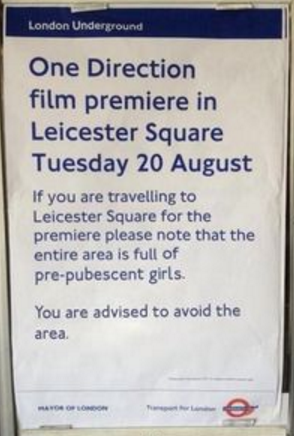
KNOWLEDGE BASE Cultural Localization For The UK
The information on this page was current at the time it was published. Regulations, trends, statistics, and other information are constantly changing. While we strive to update our Knowledge Base, we strongly suggest you use these pages as a general guide and be sure to verify any regulations, statistics, guidelines, or other information that are important to your efforts.
Brexit Update:
Since the UK officially left the European Union on January 31, 2020, the relationship between the two has evolved and continues to be shaped by the ongoing implementation of the withdrawal agreement.
Key Dates:
-
January 31, 2020: UK officially left the EU and entered a transition period that ended on December 31, 2020.
-
December 31, 2020: The transition period ended, and the UK fully exited the EU single market and customs union.
-
January 1, 2021: The UK-EU Trade and Cooperation Agreement came into effect, outlining the post-Brexit relationship between the two entities.
-
2023/2024 Current: The UK and EU are still navigating the ongoing implementation and potential revisions of their post-Brexit relationship.
It's crucial for businesses operating in either the UK or the EU to stay informed about the latest developments and adjust their operations accordingly.
Cultural Localization For The UK
Localization is essentially making a product or service appear as if it was developed in the local market, and it's a key component of expanding into new global markets. Cultural localization uses things such as local customs, colors, societal codes and values, and similar cues and sensibilities that are understood by the market. The more you know about the UK's culture, the better you'll be able to localize your website and mobile apps for the UK.
Of course, depending on the country where you are expanding, there may be a lot of similarities to your own. With others, things will be very different. In either case, there will be changes necessary to localize your product for that new market.
Global strategy, internationalization, localization...and globalization
Before we start looking at cultural localization for the UK, let’s first take a moment and put localization into context with internationalization and having a global strategy, since you will sometimes hear these terms used interchangeably. We'll also give you a quick definition of globalization to help you differentiate it from global strategy.
Global Strategy - Developing a global strategy is the process of addressing all of the logistical and organizational aspects for content, assets, and message across markets and cultures for your global expansion. Think of it as the first step in your process, as the foundation for what comes next. In the process of developing your global strategy you’ll want to consider:
-
The research, identification, market validation, and selection for any new global market
-
The capturing and formalizing of global business requirements
-
Identification of technology standards, available solutions, and how your systems, products, and services integrate with these standards
-
Language differences leading to translation needs
-
Cultural considerations that could impact your product, service, messaging, and interactions
-
Any opportunities for marketing or technological reuse across global markets as you expand
-
Internal alignment and support for globalization, internationalization, and localization
Internationalization (i18n) - This is the process by which you prepare the technical aspects of your product or service to easily be localized, and requires both technical expertise and a knowledge of the markets you plan to enter. It is essentially building flexibility into your coding, site layout, and documents so that you can easily switch from one language to another, from one cultural setting to another. If you have done your i18n correctly, you can much more quickly and cost-effectively localize as you expand.
Localization (l10n) - With localization, you are making a product or service in such a way that it culturally belongs in that market, so that it feels natural and local. For example and depending on the market, localization may include:
-
Changing the language out to the one used in the new market
-
Changing out images, colors, and other visuals to be appropriate for that market
-
New time zones, contact information, hours of operation
Globalization - We've already defined what having a global strategy means. Globalization is not another term for having a global strategy. In fact, they mean very different things. Compare the definition below to the description of Global Strategy above, and you'll see that what you are undertaking is a global strategy, not globalization.
Globalization: The worldwide movement toward economic, financial, trade, and communications integration.
Globalization implies the opening of local and nationalistic perspectives to a broader outlook of an interconnected and interdependent world with free transfer of capital, goods, and services across national frontiers.
If you understand local culture and etiquette, you will have a better chance of successfully communicating and providing products that fit. We’ll pull some of the information highlighted in the Business Culture section to provide background to this discussion.
Cultural refers to things such as:
-
Colors, shapes, sizes, styles
-
Images, icons, graphics
-
Societal codes; i.e. humor, etiquette, rituals, myths, symbols
-
Societal values, power, relationships, beliefs
Cultural localization and the national culture of the UK
Each culture has a collective way of thinking, which in turn affects the workplace. For instance, in cultures where getting along is much more important than arguing, negotiations can be very confusing for someone who is used to saying what they think and demanding results. In order to better understand how values in the workplace are influenced by culture, Geert Hofstede conducted a comprehensive study around six different dimensions and uses this information to help explain business culture in a number of countries.
The six dimensions are:
Power Distance
A measure for how much the less powerful members of a society accept and expect that power is distributed unequally. The UK scores toward the lower end of this dimension, suggesting that inequalities between people should be kept to a minimum. This is driven in part by the sense of fair play in British society.
Individualism vs. Collectivism
In societies that show more individualism, its members are expected to take care of just themselves and their immediate families. In societies that show more collectivism, individuals can expect that their family or members of their particular group will take care of them in exchange for unquestioning loyalty. The UK's score on this dimension is among the highest, reflecting the fact that its people are very individualistic. People are taught to think for themselves and discover their true purpose in life. The path to happiness is through personal fulfillment.
Masculinity vs. Femininity
Masculine societies show a preference for achievement, heroism, assertiveness, and material rewards, and are more competitive. Feminine societies show a preference for cooperation, modesty, caring for the weak, and quality of life, and are generally more consensus-oriented. The UK is a masculine country, with people who are driven and success-oriented. This can be confusing, since the British tend to be modest and understated. When working with them, you will need to be able to get to the underlying meaning since it may not be apparent.
Uncertainty Avoidance
The level of discomfort members of a society feel with uncertainty and ambiguity. The British score on this dimension is relatively low, showing that they are quite comfortable with uncertainty. They are happy to work out the details as they go along, though the end goal will be clear. At work this appears as a light plan for how the work will get done, allowing for changes as new information arises. They are very happy to 'muddle through' as they go.
Long Term vs. Short Term Orientation
The degree to which cultures prefer to maintain long-held traditions while viewing change with suspicion versus cultures that encourage thrift and modern education as a way to prepare for the future. The UK falls right in the middle on this dimension with no clear leaning in one direction or the other.
Indulgence vs. Restraint
Indulgent societies allow for relatively free gratification related to enjoying life and having fun. Restrained societies suppress gratification of needs and regulate them by means of strict social norms. With a score toward the high end, the UK can be classified as indulgent. This translates to a society that likes to enjoy life and have fun, and will indulge on things that help them to do so. They tend to be optimistic with a positive outlook and like their leisure time. They are comfortable doing what they want and spending money as they wish.
And once you've got a sense for the dimensions, watch this interesting video that shows how the different parts of the world compare.
Hofstede resources
If you would like to learn more about this research and its findings, Geert Hofstede, Gert Jan Hofstede, Michael Minkov have written a book on the subject.
Map the Dimensions on a World Map - In this video each dimension is explained and then mapped on the world, showing how different parts of the world compare.
If you’d like to hear Geert Hofstede himself describe these spectrums, the following short videos can be viewed:
10 Minutes on Uncertainty Avoidance
10 Minutes on Masculinity vs. Femininity
10 Minutes on Individualism vs. Collectivism
10 Minutes on Long Term vs. Short Term Orientation
10 Minutes on Indulgence vs. Restraint
Images, icons, and graphics
Images, icons, and graphics take on special meaning in a culture, and when combined with other cultural influences, can make or break a marketing campaign’s or service’s success. The way that people perceive and interpret symbols and cultural norms is called Semiotics, and those perceptions vary from country to country.
Semiotics is the study of signs and their associated interpretation or meaning, and it’s the primary way that we understand concepts familiar to us within a culture. Your company’s ability to tap into that interpretation in the UK will contribute to your success. To avoid conveying your own culture’s meaning of images, text, and sounds, we recommend that you find local specialists to help you in developing products, services,and campaigns that are relevant to the UK and don’t inadvertently confuse or alienate your potential customers.
This video gives an overview and should give you a better understanding for what semiotics is all about.
The United Kingdom's Royal Family
While many people have a fascination with the British Royal Family, it is not a good idea to use them in any way to advertise or promote your product or service. For the most part, etiquette dictates that members of the Royal Family are not used in advertising or communications in any way that implies that they are endorsing a product or service. The UK’s Advertising Standards Agency (ASA) Committees of Advertising Practice (CAP) endorses this view, and advises that members of the Royal Family should not be shown or mentioned in marketing communications without their prior permission. See what CAP has to say about non-broadcast advertising and the Royal Family.
You must also obtain permission for using emblems associated with the Royalty such as the Royal Arms, Royal flags, the Royal Crown, or anything that suggests in any way that the Royal Family is associated with, or is endorsing, your product or service. In other words, don’t do it unless you’ve received express permission to do so.
Class system in the United Kingdom
You may have read throughout this site that, while the British believe in fairness and may not overtly demand class distinction, there are ways that social hierarchy shows through. For instance, the quality of clothes, Italian shoes, manner of speech, and even the stripes on ties will indicate a person’s status.
Pay careful attention to how you dress people for your advertising and even their accent. If you are showing a ‘posh’ person, be sure their dress, manners, and speech reflect the same. And don’t use a person with a very cultured accent to represent a person with a limited education.
The English are British, but not all British are English
The United KIngdom is made up of England, Wales, Scotland, and Northern Ireland, and all of their citizens are British. Which should not be confused with saying they are all English. That distinction is sometimes lost on Americans, and you don’t want to make that mistake. Saying that someone from Scotland is English, for instance, is a no-no. You are correct to use the individual country, rather than lumping everyone as English, or even as British.
That distinction extends to accents. Saying everyone in any of the countries in the United Kingdom has a British accent is like saying that Americans and Canadians have a North American accent. Be aware of the differences and acknowledge them.
And don’t cast an Englishman as a Scotsman. It just won’t work, unless he does a great English accent, of course.
Here’s a fun little video that will demonstrate 17 of the accents you can encounter in the United Kindgom.
How to speak British video
On the Euro and being European
Though the UK has been part of the European Union (EU), it did not adopt the common currency of the Economic and Monetary Union (EMU), the Euro. And it has now no longer part of the EU. It goes without saying that you don’t want to use the Euro as the currency coded into your site or app, but also avoid suggesting in any content that the UK uses the Euro as their currency. Their currency is the pound sterling, represented by £.
Though one could argue that the UK is part of Europe, there are people in the UK who don’t consider themselves European. They think of themselves as English and British, for instance. Avoid using the term European to describe British citizens, unless you have the advice from locals that in the context it’s the right thing to do. And of course, the subject of being part of the European Union has become much more touchy. Get local advice for how to address that topic, as well.
British humor
There is a difference between American and British styles of humor (humour in the UK, by the way), that is explained well by Stephen Fry in this clip.
Use this explanation as a starting point in understanding that what Americans think is funny will not necessarily go over as well in the UK and could demonstrate the fact that you are an American company doing business in the UK. There is plenty of British UK humor that Americans will find funny, and vice versa. But if you are going to localize using humor, get some local assistance or make sure that you’ve had local people review it before finalizing copy.
And here are some more examples of British humor to entertain you. And as you’ll see, it’s clear the London Underground system has a sense of humor.
Holidays in the United Kingdom
Pay attention to the holidays in the UK, either to take advantage of them in your sales efforts, or to be aware for staffing, changes in business volume, and business hours. Public holidays in the United Kingdom, commonly referred to as bank holidays, are days where most businesses and essential services are closed although an increasing number of retail businesses (especially the larger ones) do open on some of the public holidays, in relation to trading laws.
Only four days are observed as holidays in all countries of the United Kingdom. They are: New Year's Day, May Day or Early May Bank Holiday, Christmas Day and Boxing Day. Most other holidays are decided upon each of the four nations in the UK. The United Kingdom has no national day holiday marked or celebrated for its formal founding date.
Gestures in the United Kingdom
Acceptable gestures differ from country to country. For instance, the following can cause problems in the UK.
-
Using the “middle finger” or a “v sign” with the back of your hand toward the other person are both considered offensive (for instance, don’t create an ad with someone ordering two beers at a bar with their fingers held in this way)
-
Greeting strangers with a kiss, a hug, or a slap on the back (if you show business people who have just met, they shouldn’t slap each other on the back in a comradely fashion as they part ways)
Use local experts to help you with developing your content or media, to make sure you don’t inadvertently incorporate a gesture that is acceptable in your country, but not in the UK.

For an overview and more information on each of the Hofstede Six Dimensions of National Culture
For the UK’s Cultural Dimension scores
Map the Dimensions on a World Map - In this video each dimension is explained and then mapped on the world, showing how different parts of the world compare.
If you’d like to hear Geert Hofstede himself describe these spectrums, the following short videos can be viewed:
10 Minutes on Uncertainty Avoidance
10 Minutes on Masculinity vs. Femininity
10 Minutes on Individualism vs. Collectivism
10 Minutes on Long Term vs. Short Term Orientation
10 Minutes on Indulgence vs. Restraint
Advertising Standards Agency (ASA)
Committees of Advertising Practice (CAP)
CAP ‘s position on non-broadcast advertising and the Royal Family
KNOWLEDGE BASE Cultural Localization For The UK






